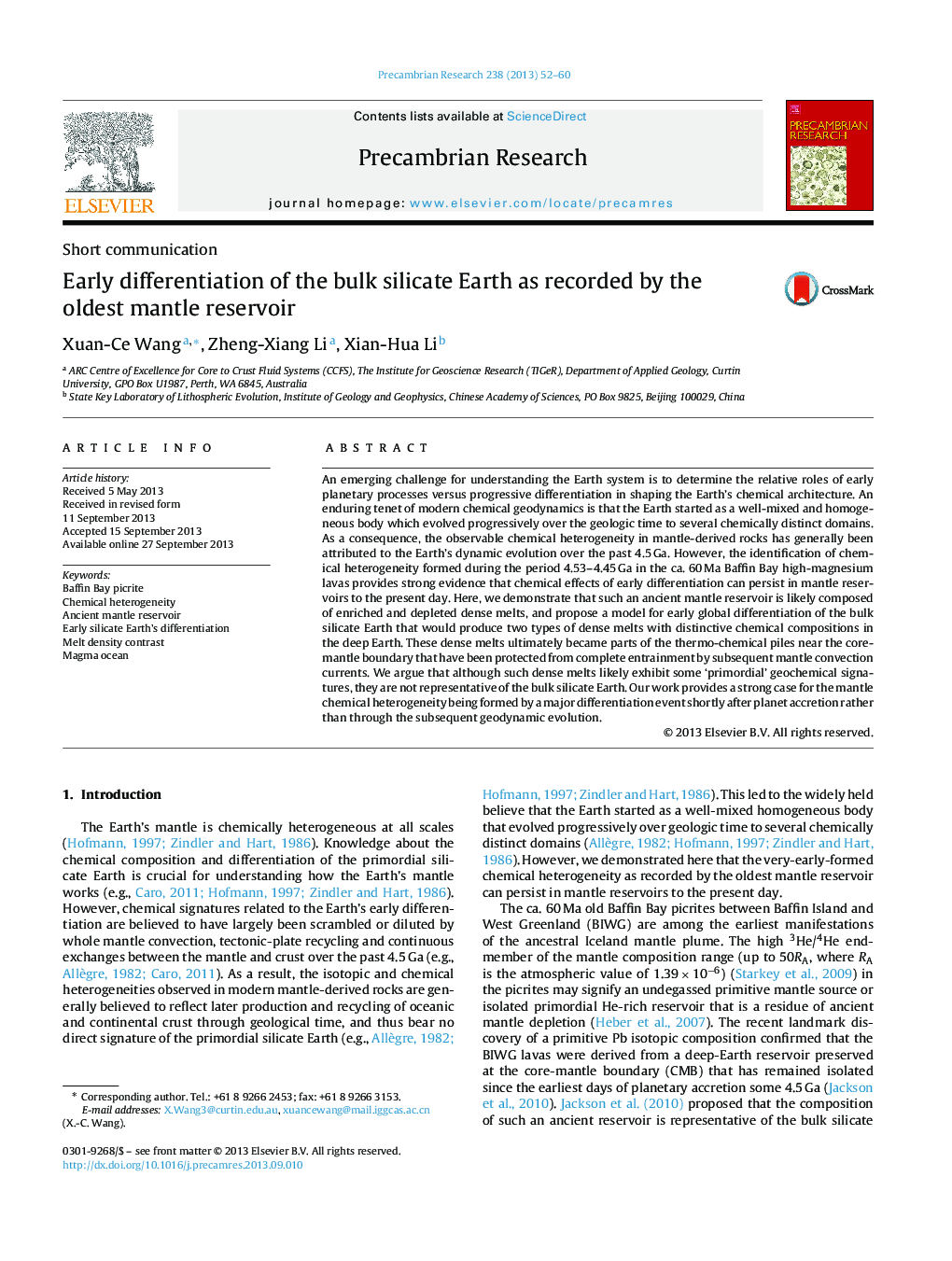| کد مقاله | کد نشریه | سال انتشار | مقاله انگلیسی | نسخه تمام متن |
|---|---|---|---|---|
| 4723188 | 1639636 | 2013 | 9 صفحه PDF | دانلود رایگان |
• A 4.53–4.45 Ga-old formed ancient mantle reservoir is likely composed of enriched and depleted dense melts.
• Early global differentiation of the bulk silicate Earth would produce two types of chemically distinctive dense melts.
• Dense melts ultimately became parts of the thermo-chemical piles near the core-mantle boundary.
• Early planetary processes may play an important role in shaping the Earth's chemical architecture.
An emerging challenge for understanding the Earth system is to determine the relative roles of early planetary processes versus progressive differentiation in shaping the Earth's chemical architecture. An enduring tenet of modern chemical geodynamics is that the Earth started as a well-mixed and homogeneous body which evolved progressively over the geologic time to several chemically distinct domains. As a consequence, the observable chemical heterogeneity in mantle-derived rocks has generally been attributed to the Earth's dynamic evolution over the past 4.5 Ga. However, the identification of chemical heterogeneity formed during the period 4.53–4.45 Ga in the ca. 60 Ma Baffin Bay high-magnesium lavas provides strong evidence that chemical effects of early differentiation can persist in mantle reservoirs to the present day. Here, we demonstrate that such an ancient mantle reservoir is likely composed of enriched and depleted dense melts, and propose a model for early global differentiation of the bulk silicate Earth that would produce two types of dense melts with distinctive chemical compositions in the deep Earth. These dense melts ultimately became parts of the thermo-chemical piles near the core-mantle boundary that have been protected from complete entrainment by subsequent mantle convection currents. We argue that although such dense melts likely exhibit some ‘primordial’ geochemical signatures, they are not representative of the bulk silicate Earth. Our work provides a strong case for the mantle chemical heterogeneity being formed by a major differentiation event shortly after planet accretion rather than through the subsequent geodynamic evolution.
Figure optionsDownload as PowerPoint slide
Journal: Precambrian Research - Volume 238, November 2013, Pages 52–60
